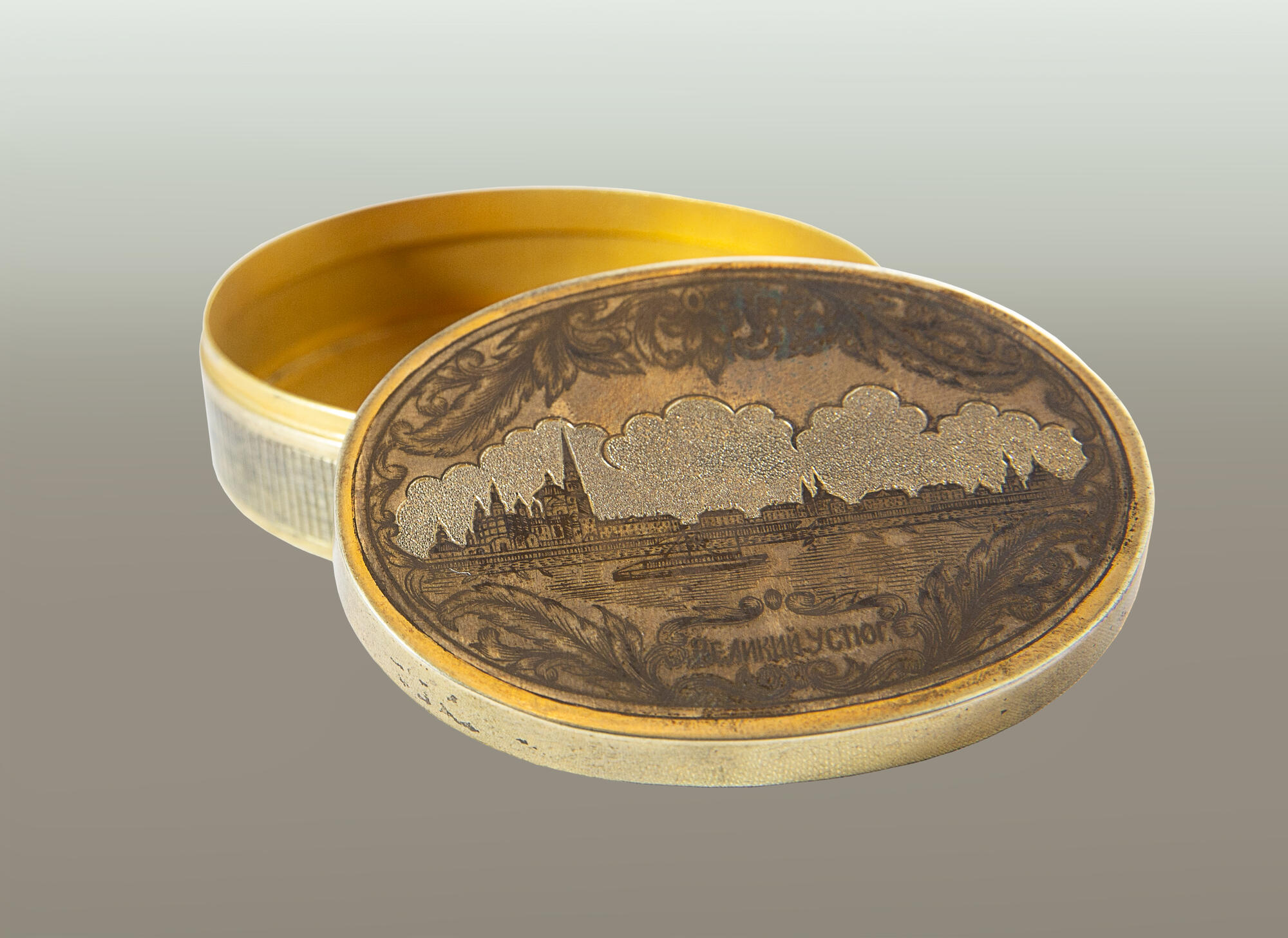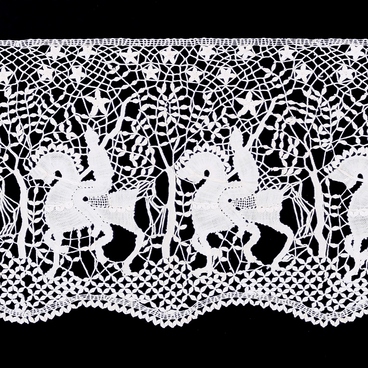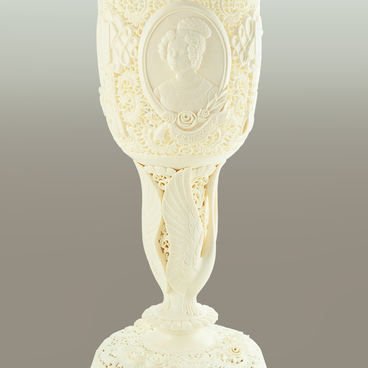In the 18th century, Veliky Ustyug was the most famous center of Russian niello art. The distinctive style of the Ustyug niello artworks was based on a combination of a figurative motif and an ornamental frame, an outline and a decorative spot, the use of embossing, chasing and gilding. In the 20th century, the techniques and secrets of production were almost forgotten. After the revolution, the only artisan who knew the technique of decorating with the Ustyug niello was Mikhail Pavlovich Chirkov (1886–1938). He managed to attract the attention of the Ustyug Union of Industrial Cooperation, get government funding and open an “Export Workshop” of niello products.
The revival of niello art in the 20th century is associated with the name of Yevstafy Pavlovich Shilnikovsky, a native of the Veliky Ustyug uezd. He studied at the St. Petersburg Academy of Arts in the class of Vasily Mate. After the revolution, he returned to his native city and devoted his work to the restoration of forgotten traditions and the development of craft. Since 1936, he has been the artistic director of the “Severnaya Chern” (Northern Niello) artel (in 1960, it became a factory, in 1973 — a plant, now it is “Severnaya Chern” CJSC).
The success of the “Pushkin Series” in Moscow and at the International Exhibition in Paris (Big Silver Medal and Diploma, 1937) marked the beginning of a wide international fame. Shilnikovsky’s drawings were used as designs in most modern products that depicted contemporary themes and were commissioned by the government.
A striking example of Shilnikovsky’s work is the powder box “Veliky Ustyug” from the collection of the Russian Museum. The panorama of the city on the Sukhona River with ancient churches is a symbol of the famous craft.
Since the 18th century, silversmiths from Veliky Ustyug have decorated the sides of snuffboxes and jewelry boxes with a detailed panorama of the city architecture as seen from the embankment of the Sukhona River. The view of Veliky Ustyug from Dymkovskaya Sloboda is one of the most beautiful in Russia.
The combination of smooth and chased surfaces and the patterned silhouette of a luminous sunset sky, the black ornamental frame of the oval image with an inscription in a cartouche demonstrate the best traditional techniques and methods of local jewelers.
The revival of niello art in the 20th century is associated with the name of Yevstafy Pavlovich Shilnikovsky, a native of the Veliky Ustyug uezd. He studied at the St. Petersburg Academy of Arts in the class of Vasily Mate. After the revolution, he returned to his native city and devoted his work to the restoration of forgotten traditions and the development of craft. Since 1936, he has been the artistic director of the “Severnaya Chern” (Northern Niello) artel (in 1960, it became a factory, in 1973 — a plant, now it is “Severnaya Chern” CJSC).
The success of the “Pushkin Series” in Moscow and at the International Exhibition in Paris (Big Silver Medal and Diploma, 1937) marked the beginning of a wide international fame. Shilnikovsky’s drawings were used as designs in most modern products that depicted contemporary themes and were commissioned by the government.
A striking example of Shilnikovsky’s work is the powder box “Veliky Ustyug” from the collection of the Russian Museum. The panorama of the city on the Sukhona River with ancient churches is a symbol of the famous craft.
Since the 18th century, silversmiths from Veliky Ustyug have decorated the sides of snuffboxes and jewelry boxes with a detailed panorama of the city architecture as seen from the embankment of the Sukhona River. The view of Veliky Ustyug from Dymkovskaya Sloboda is one of the most beautiful in Russia.
The combination of smooth and chased surfaces and the patterned silhouette of a luminous sunset sky, the black ornamental frame of the oval image with an inscription in a cartouche demonstrate the best traditional techniques and methods of local jewelers.


